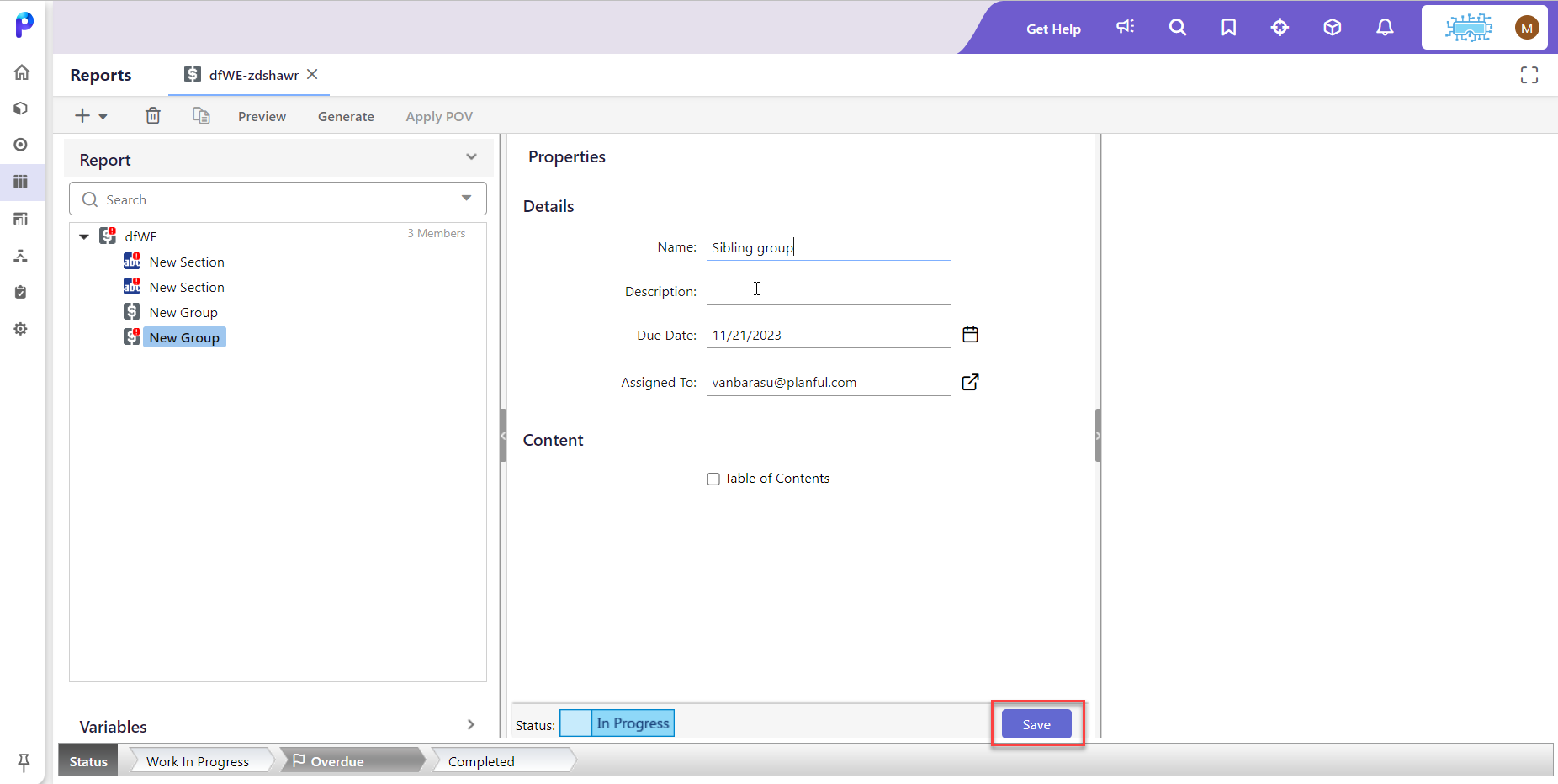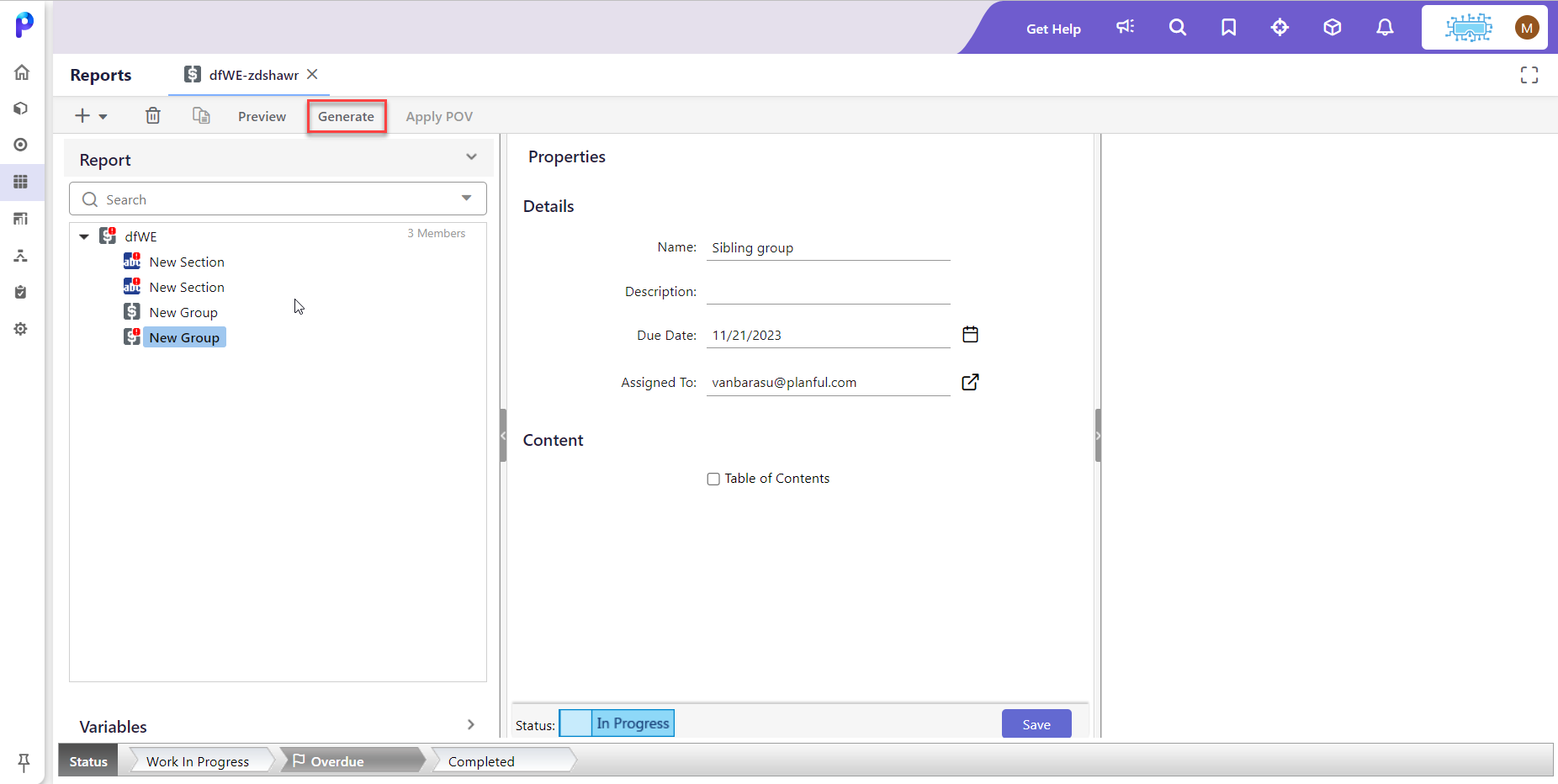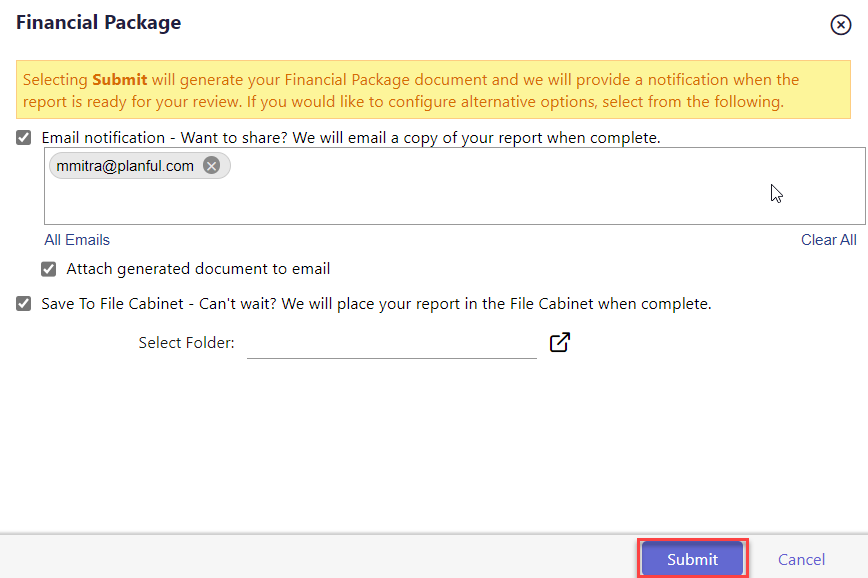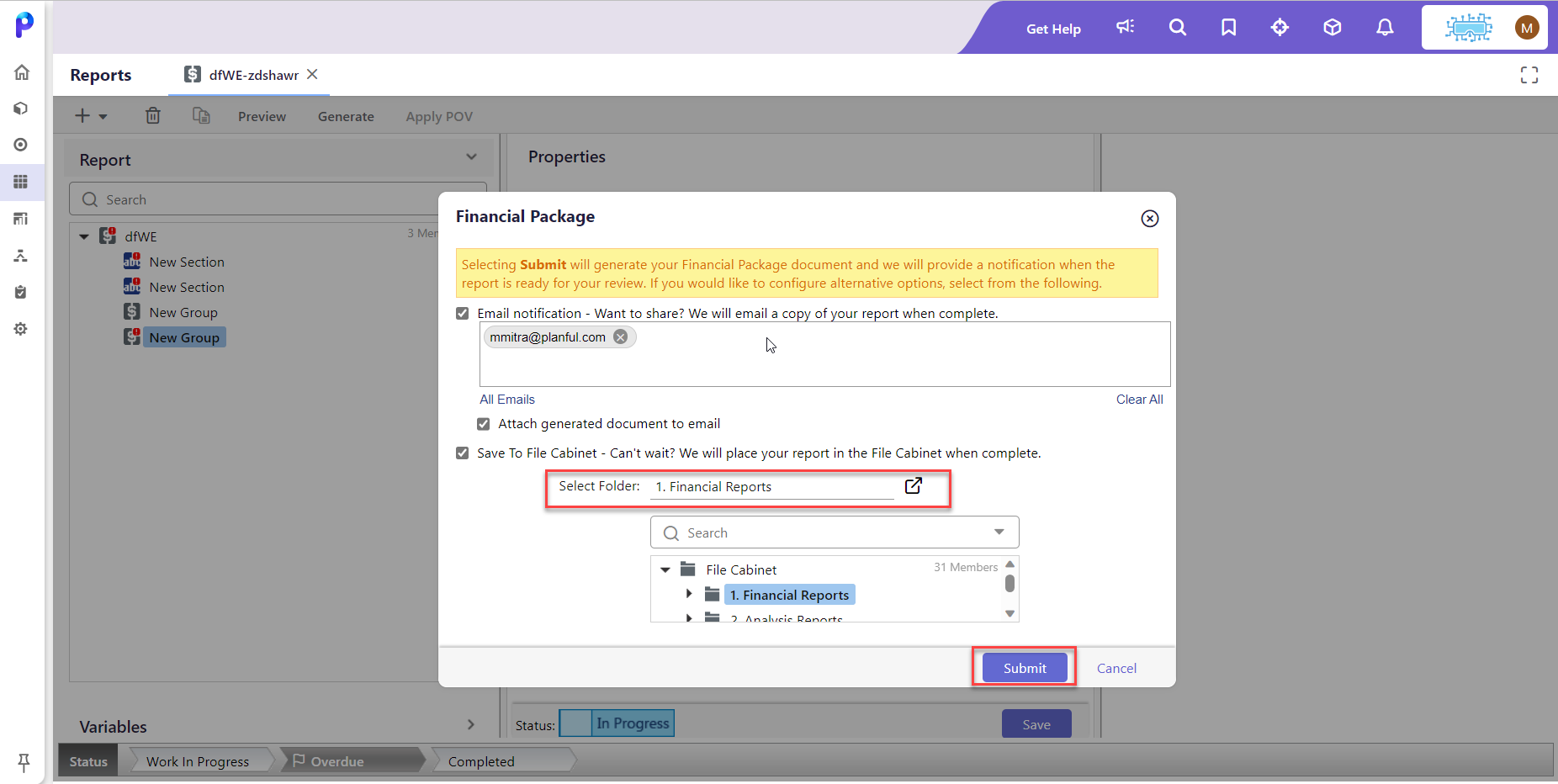- 6 Minutes to read
- Print
- DarkLight
- PDF
Working with Financial Package
- 6 Minutes to read
- Print
- DarkLight
- PDF
When you open a financial package from the reports home page, depending on the configuration of that package, you can view its data. For example, you can view the package information in the sub-sections of the center pane. Apart from viewing the details, you can even update them as desired and do the following:
- Make the necessary updates to your Financial Package report, and click Save.

- Select a Group or Section and click Preview.
 Note:When you select a Group, the Group and its related Sections appear on the preview screen. However, if you select a specific Section, only that Section will be displayed in the preview.
Note:When you select a Group, the Group and its related Sections appear on the preview screen. However, if you select a specific Section, only that Section will be displayed in the preview. - Click Generate to determine where you’d like to place the output file and what kind of notification you’d like to receive when the report is ready for your review.

If you would like to configure alternative options, select from the following.- E-mail notification - Select to add email recipients to whom you wish to send a copy of the report.
- Attach generated document to email - Select to include the report output in the status notification email.
- Save to File Cabinet - Select to have the output document saved to a folder in the File Cabinet.

- Select a file location destination from Select Folder and click Submit.

- A message showing that the Financial Package document has been created successfully is displayed.
- Click the link in the message to download the created Financial Package document.
Linked Documents
There are two options to store attached documents: System or File Cabinet. When updating documents, different procedures are depending on where you have chosen to store the document.
If a System file is selected, the document you are using in the Financial Package output file is maintained on either a local drive or a shared drive within your network.
Hidden sheets cannot be linked from an Excel workbook.
Excel Add-in files should be tested and confirmed.
Sheet selection is allowed only in system uploads.
There is no limitation to the number of sheets that you can have in the uploaded Excel document.
Updating Linked Documents
To update a linked document:
- Open the document locally (in Word or Excel), make the change, and save the file.
- Open the Financial Package Report in the Reports File Cabinet and open the required section.
- Select Browse to navigate to the updated file and save the changes made to the section.
- Preview the package.
Rendering a Report Leveraging a Template
Microsoft Excel default page numbers are supported, but customized page numbers are not supported in the header/footer. Use alignments (left/right/center) for the header/footer instead of spaces. If the page number is included with spaces, starting at page 10, it will wrap to the next line.
The cover page of the Financial Package report can be designed using a Microsoft Word Template and attaching it to the Financial Package report. You can also define the header and footer and apply a watermark logo in the template to generate a nicely formatted Financial Package output.
Ensure that you define only one page for the Cover Page in the template. If the content on the cover page is more than one page, the content after the first page is truncated during the Financial Package Word document creation.
Reduce the size of your margins in the template to provide more area for rendering either reports or referenced Microsoft Excel or text documents (Word or plain text). It is recommended that you increase the area so that the resulting report is presented in a clear and easy-to-read manner.
Template margins are applied to the generated Financial Package report for all sections, including document uploads. Ensure that the margins are applied without overlapping the header/footer section. The bottom margin of a page should be above the top margin of the footer. The top margin of the page should be below the bottom margin of the header. Do not overlap.
You can modify the Heading Styles that the Financial Package output document uses. To make the change to the styles, open your template and select the Styles Window. Within the Style Window, highlight the Style you want to modify and select the drop-down arrow, and select “Modify”.
- You can change items such as font, font size, and color. Once complete, select New documents based on this template to apply the settings to all future Financial Package Reports that are generated based on this template.
If you have the Financial Package output report open when making the change to the template, close the Financial Package output report and Preview the report again. you cannot re-generate the output to see the results of changes made to the template.
Overrides, Use Cases, Expected Results
When you add a report to a Financial Package report, some selections can be overwritten. For example, a POV could be applied or there could be selections made in the Financial Package interface (i.e. page selections in Financial Package for run-time purposes) that will change the output of the report once generated in the Financial Package.
The order of precedence in which data is populated in Financial Package reports is as follows:
- Financial Package selections
- POV selection
- Report selections
Setup and Expected Results
The following are the expected results when a Finance Dynamic Report is added with Dimension security applied:
| Setup | Expected Result |
|---|---|
| Data is driven by Report selections |
| Data is driven based on POV selections |
| No data populated |
| Data driven from Financial Package selections |
| No data populated. |
| Data driven from Financial Package selections. |
| No data populated |
| Data driven from Financial Package selections |
| No data populated |
Override Substitution Variables
You can edit substitution variables (either standard or dynamic) for Dynamic Reports in a Financial Publishing Package (FPP), for variables that are used in the header and footer, member selections, report sets, or line headers.
If a variable is part of a Dynamic Report, the Substitution Variables icon is displayed in the toolbar when the report is selected as part of the FPP. Clicking the icon launches a window that displays a consolidated list of all the substitution variables used in the reports. You can then override the default variable values before generating the Dynamic Report by clicking the variable and making the desired change. The override is applied to preview or generation of the FPP.
Additionally:
If a single variable is used in multiple reports or multiple times in a single report, it is displayed only once in the User Prompt and takes the common value;
Icons appear in the gird if the variable is used on headers, report sets, or dimensions;
If the same variable is used in the header of one report and on the report set in another report, both header and report set icons are shown;
Default values from master substitution variables are displayed in the dialog, and you can update the variable values before running the FPP.

